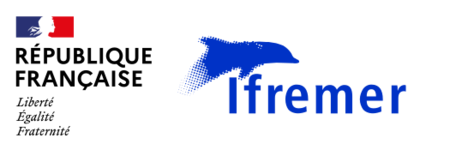Marine Biodiversity Exploitation and Conservation (MARBEC) research unit
The IFREMER MARBEC research unit is part of the joint research unit (UMR) Marine Biodiversity Exploitation and Conservation (MARBEC) that studies marine biodiversity of lagoon, coastal and offshore ecosystems, mainly in Mediterranean and tropical areas. Its research addresses the uses of biodiversity goods and services at various levels of organisation — molecular, individual, population and community.
Organisation
The two MARBEC structures (IFREMER and UMR), although they have the same name, do not have the same scope. The IFREMER MARBEC unit combines three IFREMER laboratories (the Mediterranean Fisheries Laboratory in Sète, the Adaptation and Adaptability of Animals and Systems in Palavas and the Aquaculture Experiments Service Laboratory also located in Palavas).
The UMR MARBEC houses three IFREMER laboratories (the Mediterranean Fisheries Laboratory in Sète, the Adaptation and Adaptability of Animals and Systems Laboratory in Palavas and the Environmental Resources Laboratory (LER) in Sète) and research units from IRD, CNRS and the University of Montpellier.It is one of the largest laboratories working in marine biodiversity and its uses in France, with a staff of 230, including 80 researchers and lecturer-researchers. The unit is spread across several sites: Sète, Montpellier and Palavas-les-Flots in France, as well as in the Indian Ocean, in Asia, Africa and South America.
Research
The main objectives of the UMR MARBEC is to describe marine biodiversity, understand the dynamics and the functioning of marine ecosystems, analyse the impact of human-induced pressures on these ecosystems and develop scenarios of response to global change, reconcile exploitation (in particular fishing and aquaculture) and conservation, and meet societal expectations (assessments, innovation, renovation).
These missions are structured around eight main topics:
- Evolutionary ecology and adaptation: links between geographic distribution and evolutionary history of marine organisms, characterisation of genetic and physiological architecture of organisms, understanding the links between genotype and phenotype, study the mechanisms of genetic and physiological adaptation to environmental change.
- Community dynamics and functioning: assessment of the impacts of global change (including invasive species and climate change) on the structure and functioning of communities, study of the mechanisms that govern the relationships between the structure and functioning of species communities, assessment of biotic interactions across various spatial and temporal scales.
- Individuals, population and habitats: characterisation of behavioural strategies, both individual and collective, occupation of space in relation to the environment, modelling population dynamics, study of connectivity between geographic areas and habitats, formulation of population health indicators.
- Microorganisms and interactions with macroorganisms: inventory of taxonomic, genetic and functional diversity of microorganism communities, assessment of the effects of microorganisms and their biodiversity on the physical condition and health of macroorganisms, quantification of the role of macroorganisms on the structure and functioning of microbial communities.
- Contaminants: fate and responses: assessment of the levels and sources of contamination of marine environments as well as the effects of contaminants on organisms, description of abiotic fate (degradation, adsorption/desorption, etc.) and biotic of contaminants (bioavailability, bioaccumulation, metabolism), determination of concentration thresholds of perceptible effects, development of an integrative approach including the impact and fate of pollutants and other stress factors (salinity, temperature, CO2 partial pressure, etc.) on organisms.
- Sustainable aquaculture: selection of marine biological resources (productivity and health traits, genetic variability, limitation of interactions between wild and cultivated populations, alternative sources of animal feed), improvement of farming systems (optimisation of algal cultivation, evaluation of bioremediation solutions for managing waste, integrated multi-trophic systems) and understanding interactions between the cultivated species and the production system.
- Coastal systems of multiple uses: analysis of the status of coastal ecosystems, development of an ecological approach for restoration, development of the different uses of coastal systems and their reconciliation with biodiversity and habitat conservation.
- Ecosystem approach to fisheries: characterisation of individual and collective strategies of fishers, observation of the direct and indirect impacts of uses and their effects on ecosystems, analysis of the combined effects of human-induced and natural factors, summary of biological, ecological, socio-economic and regulatory knowledge to assess the effectiveness of operational tools for the management of human activities and the conservation of marine ecosystems, development of scenarios for the evolution of uses and their impacts on marine biodiversity.
